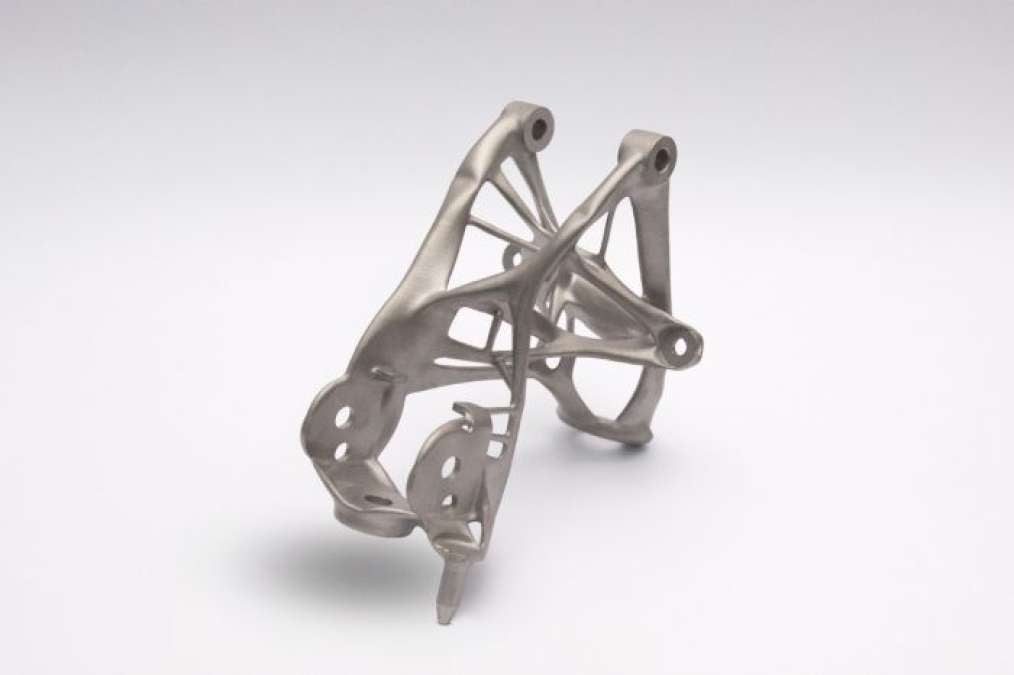GM’s CEO Mary Barra has promised that the company will add 20 new electric battery or fuel cell vehicles to their lineup by 2023. Right now, GM’s most popular electric vehicle is the Chevrolet Bolt. GM is partnering with a company called Autodesk to speed up the designs of the potential new electric vehicles using 3D printing.
Example of 3D Printed Seat Bracket
The picture you see is an example of what GM is experimenting with when it comes to producing parts. GM and Autodesk engineers have 3D printed a seat bracket that is 40 percent lighter and 20 percent stronger than the original part. It used to take 8 different components from a number of different suppliers to make the bracket, but now they can produce just one 3D-printed part. This sort of technology can help GM speed up the design process while also making the streamlined parts lighter and more durable. Making the components lighter will help make the EVs more fuel efficient.
The new technology pairs artificial intelligence or AI with cloud computing to generate design options, based on what the engineers need as far as weight, strength and the type of material. The “advanced generative design” software can explore hundreds of options in seconds, dramatically speeding up the vehicle design process.
Pioneering the AI and 3D Use in Manufacturing
Ken Kelzer, who oversees Global Vehicle Components for GM says, “This disruptive technology provides tremendous advancements in how we can design and develop components for our future vehicles to make them lighter and more efficient. When we pair the design technology with manufacturing advancements such as 3D printing, our approach to vehicle development is completely transformed and is fundamentally different to co-create with the computer in ways we simply couldn’t have imagined before.”
All of the auto manufacturers are experimenting with 3D printing. GM believes that it is leading the industry, using the new technology to take significant weight out of future vehicles, thereby improving fuel efficiency and improving the chances of electrifying the vehicles. If they can also reduce the number of components needed in the manufacturing process, it will save money and time.
Scott Reese, who heads Construction Products for Autodesk says, “Generative design is the future of manufacturing, and GM is a pioneer in using it to lightweight their future vehicles. Generative technologies fundamentally change how engineering work is done because the manufacturing process is built into design options from the start. GM engineers will be able to explore hundreds of ready-to-be-manufactured, high-performance design options faster than they were able to validate a single design the old way.”
For more than three decades, GM has used 3D printing to create three-dimensional parts directly from digital data. According to GM, it has some of the auto industry’s most comprehensive 3D printing capabilities in the world with more than 50 rapid prototype machines that have produced more than 250,000 prototype parts over the last decade.





